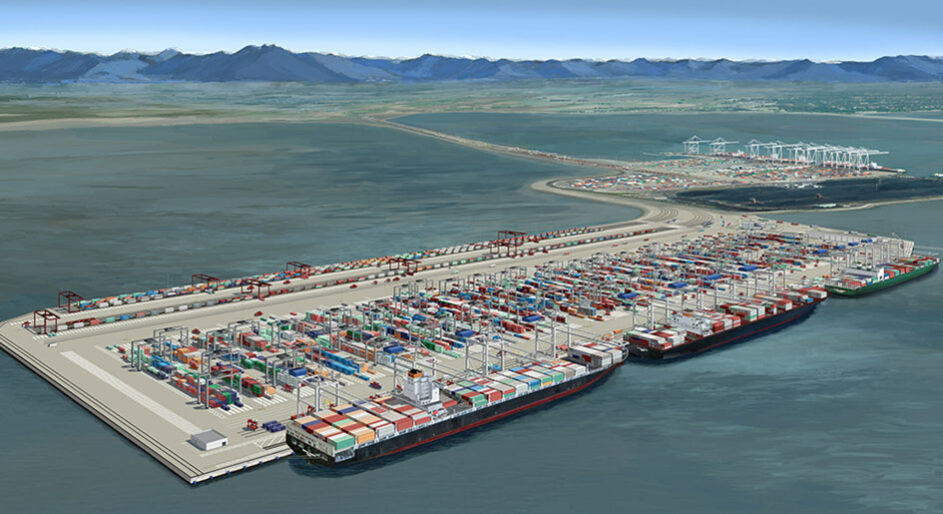The Government of Canada has approved the Roberts Bank Terminal 2 Project in British Columbia, subject to strict conditions to protect the local environment.
The Roberts Bank Terminal 2 Project includes building new land and a new three-berth marine container terminal near existing port terminals at Roberts Bank in Delta. The project will incrementally deliver an additional 2.4 million twenty-foot equivalent units (TEUs) of capacity, ultimately increasing Canada’s west coast container capacity by approximately one-third.
“With this approval, we can advance one of Canada’s most important trade infrastructure projects to date, bolster our national supply-chain resilience, and deliver generational economic benefits for Canadians and Canadian businesses,” said Robin Silvester, president and CEO of the Vancouver Fraser Port Authority, the federal agency mandated to enable Canada’s trade through the Port of Vancouver. “I’d like to thank Indigenous and local communities, scientists, industry, chambers of commerce, and all tiers of government, who have played such an important role in shaping the project to date.”
The approval comes with 370 legally binding conditions to protect the local environment and species. Some of the conditions include:
- Development and implementation of an adaptive management approach to prevent negative effects to biofilm, which includes a minimum of three years of monitoring key parameters reviewed by an independent scientific body;
- Limiting in-water construction to the window of least risk for several marine species; and
- Requirement for zero-emission cargo handling equipment on-site and to offer electrical power to vessels while berthed.
“Roberts Bank Terminal 2 has been designed in a way that ensures it aligns with our work toward our vision to make the Port of Vancouver the world’s most sustainable port, including protecting and enhancing the natural environment and reflecting Indigenous priorities,” said Judy Rogers, port authority board chair. “The port authority has collaborated with Indigenous groups on the project for more than a decade and now we look forward to working together to deliver economic, cultural and environmental opportunities and initiatives.”
According to the port authority, the project will deliver substantial economic benefits, including more than 18,000 jobs during construction; more than 17,300 ongoing jobs; an estimated $3 billion in GDP annually once built; and $631 million in tax revenue to support services for Canadians.
The port authority will now continue to work toward obtaining other applicable approvals and permits to advance the project.







